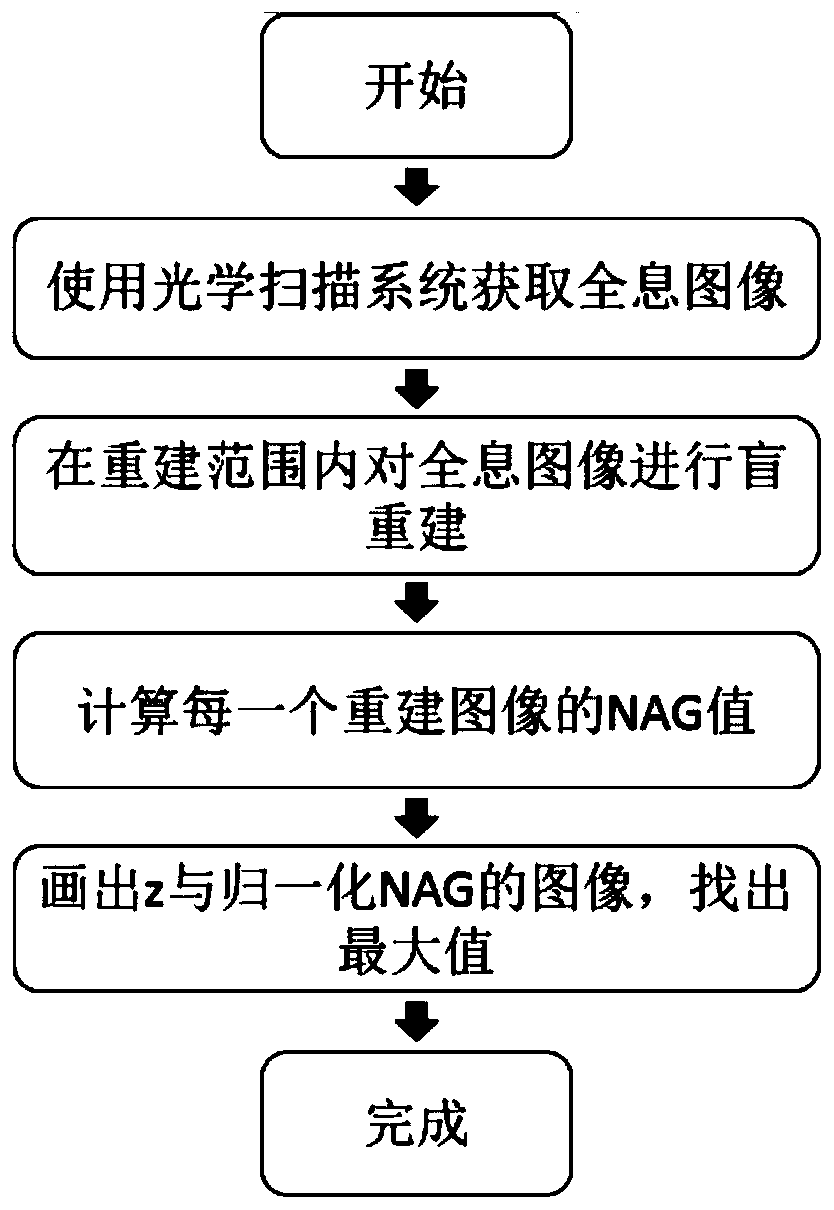A Self-focusing Method of Optical Scanning Holography Based on Mean Gradient Function
A gradient function and optical scanning technology, applied in the field of optical scanning holography, can solve the problems of self-focusing of overlapping objects, self-focusing of overlapping objects, cumbersome operation process, etc., and achieve self-focusing problems with good results and simple implementation methods Effect
- Summary
- Abstract
- Description
- Claims
- Application Information
AI Technical Summary
Problems solved by technology
Method used
Image
Examples
Embodiment 1
[0045] The process of the embodiment of the present invention is as follows figure 1 As shown, the basic structure adopted is as follows figure 2 Shown, wherein the wavelength λ=632.8nm of He-Ne laser Laser Laser, the focal length of two convex lenses (L1, L2) is all 400mm, the object to be measured of embodiment one is as image 3 As shown, the cross-section matrix size of the sliced object is 300×300. The reconstruction range of Embodiment 1 is [7mm, 9mm], n=400, and the self-focusing process of the holographic image can be realized according to the following steps:
[0046] Step 1: Acquire Holographic Image
[0047] Such as figure 2 As shown, the angular frequency emitted by the He-Ne laser source is ω 0 The light is split into two beams by the first polarizing beam splitter BS1, wherein the first beam passes through the first pupil function to form a spherical wave; the second beam passes through the acousto-optic modulator to produce a frequency shift of Ω and the...
Embodiment 2
[0057] The wavelength λ=632.8nm of the He-Ne laser Laser in embodiment two, the focal length of two convex lenses (L1, L2) is all 400mm, and the object to be measured of embodiment two is as Figure 7 As shown, the cross-section matrix size of the sliced object is 300×300. The reconstruction range of the second embodiment is [7mm, 9mm1, n=400;
[0058] Figure 8 It is the hologram obtained by the object to be measured in Example 2; Figure 9 It is the self-focusing process of Embodiment 2 of the present invention; Figure 10 Among them, (a) is the reconstructed image of the first layer slice in the second embodiment, and (b) is the reconstructed image of the second layer slice in the second embodiment. The mean gradient function can also achieve precise self-focusing on overlapping objects in the hologram, and the reconstructed image also has high definition.
PUM
 Login to View More
Login to View More Abstract
Description
Claims
Application Information
 Login to View More
Login to View More - R&D
- Intellectual Property
- Life Sciences
- Materials
- Tech Scout
- Unparalleled Data Quality
- Higher Quality Content
- 60% Fewer Hallucinations
Browse by: Latest US Patents, China's latest patents, Technical Efficacy Thesaurus, Application Domain, Technology Topic, Popular Technical Reports.
© 2025 PatSnap. All rights reserved.Legal|Privacy policy|Modern Slavery Act Transparency Statement|Sitemap|About US| Contact US: help@patsnap.com



